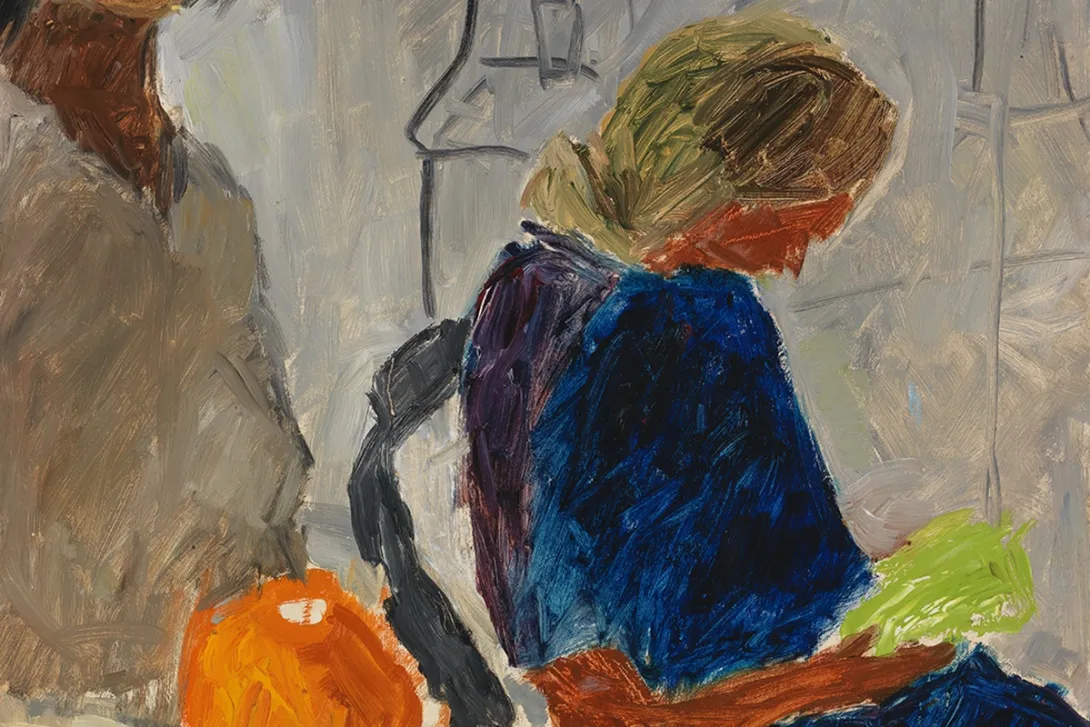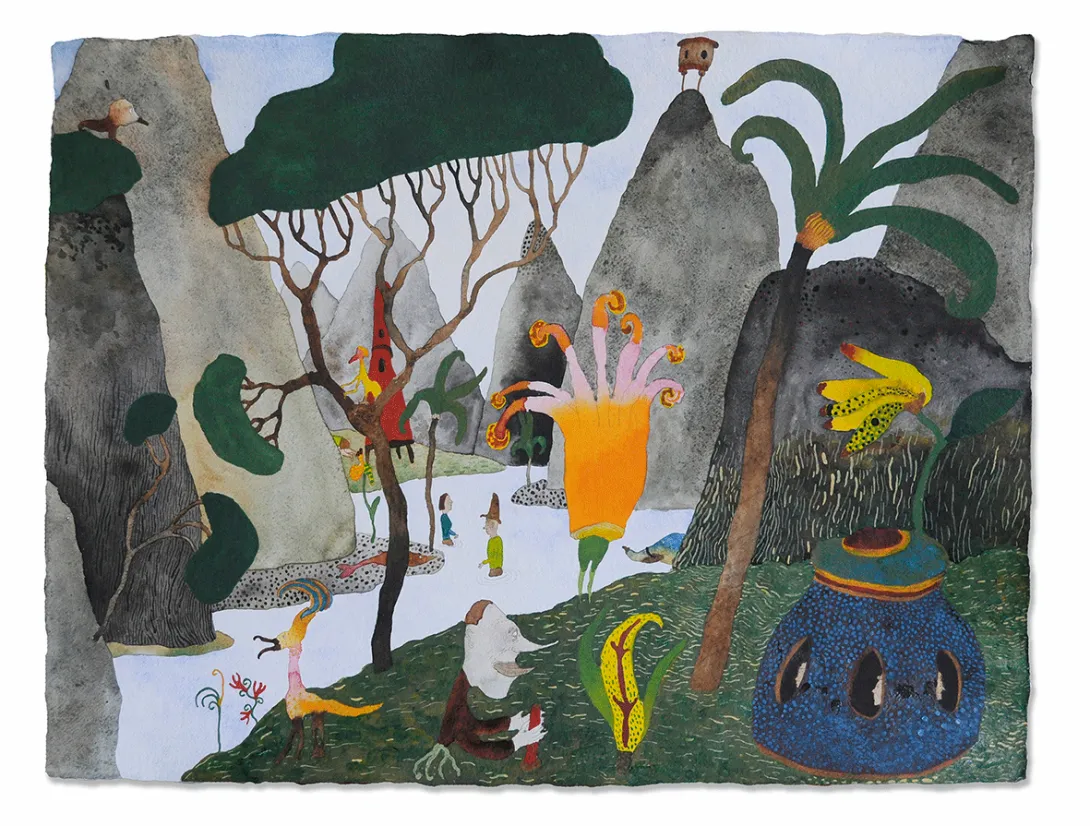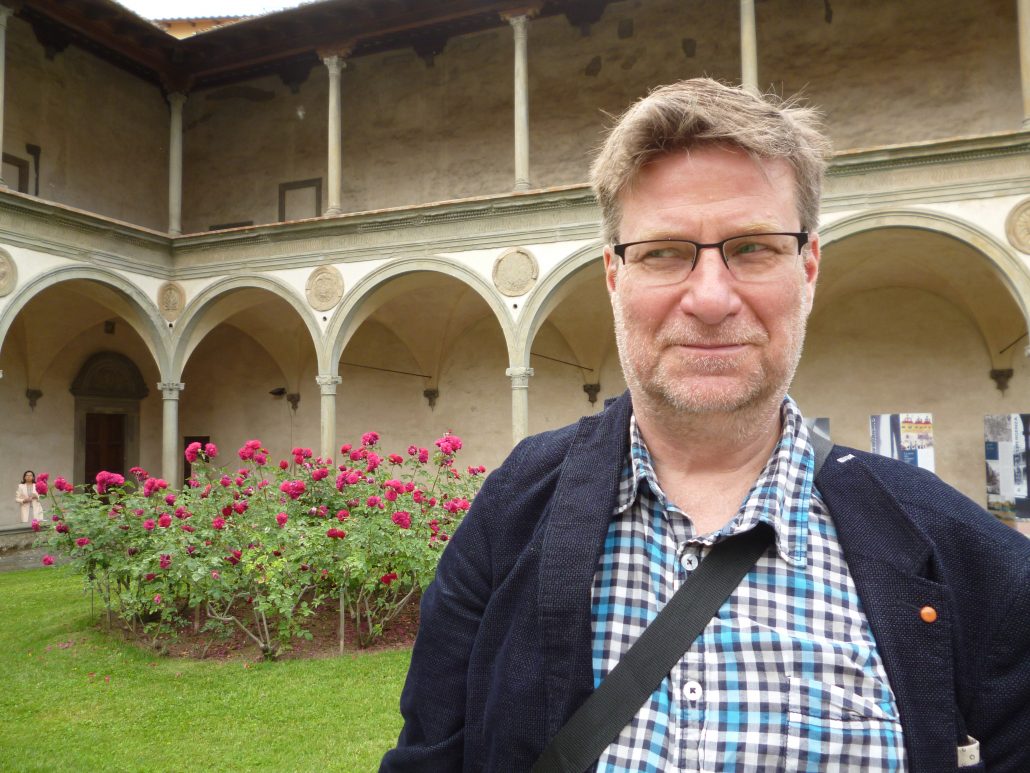Anniversary Exhibition Free 90 | HAM


For Markku Arantila, inspiration comes from the surrounding world—but never as it is. Painting is a way of interacting with the environment, in relation to one’s personal life.
Perhaps the most important thing I learned in art school was that painting matters. I was the youngest in my year at the Free Art School—barely eighteen when I started in the autumn—and I eagerly absorbed everything that was taught. The years after school were difficult, but I never really considered giving up, because I stubbornly believed I was working with something deeply meaningful. I still believe painting—though just one art form among others—is something profoundly important.
If making art ever stops, humanity is in serious trouble. Art contains something essential to being human—something that separates it from everything else. Without it, we would wither away.
At the Free Art School, we weren’t taught how the art world works or how to apply for grants, which I’ve often regretted. But maybe being kept in an artistic “cloud of cotton” was exactly what made me continue. I still paint in that same cloud. When I have a brush in hand, the only thing that exists is what happens between me and the painting. Of course, when the brush is down, it’s good to engage with the world around you. That part wasn’t taught in art school—I learned it in life.
Because of play. I originally wanted to be a filmmaker. I made silent Super 8 films with my father’s 1936 Bell & Howell Filmo camera. This was the 1970s—there were no video cameras yet. The great thing about making movies was that even after we were too old to play cowboys and Indians, we could keep playing without embarrassment—just hand someone a camera and hit record. The downside was that filmmaking is slow and complicated, and everyone has their own opinion. Painting is simpler. You always get exactly what you want.
I started painting when my mother practically forced me into an adult education course. I discovered that oil paint had its advantages, and after a while I declared at home that I would become a painter. I didn’t think of it as a challenge—I just did it. The next autumn, I enrolled at the Free Art School. I discovered colour, and it was wonderful. But after school, the spirit of play was sometimes lost. It took a personal crisis for me to realize that you’re allowed—obliged, even—to paint exactly what you want. Painting isn’t dressage.
Play shouldn’t be left to children. A child’s imagination is limited by their lack of knowledge. An adult can draw from a much wider pool of experience. As adults, we can play the games we didn’t know how to play as kids. I couldn’t paint what I paint now when I was young.
Many adults don’t know how to play—especially not without rules. But it’s important that those who can play, do play. Escapism is often dismissed, but I find escaping into reality more dangerous—where seemingly necessary but ultimately arbitrary structures become an absurd obstacle course.
The most valuable moments are meaningful coincidences. One of the most astonishing happened when I happened to drive past Kalanti. I wondered if there might be a medieval church there and decided to take a look. Sure enough, I found one—and on the wall was a huge medieval fresco of a saint arriving by sailboat on a crusade to a pagan land. On the right side of the painting was a shoreline—and a troll. I was stunned. I just painted this! I had recently done a watercolour of two characters on a ship approaching a shoreline where a troll was sitting. The composition was nearly identical. I’d drawn a scene I’d never seen before.
This surreal coincidence made me realise that the painting I had made was wrong—it didn’t work. I had painted The Ship of Fools, but it wasn’t right. So I decided to make a new version, where I would be both the crusader and the troll. A double self-portrait. It became a reflection of an inner conflict—whether to side with the “good guys” (who think they’re good) or the bad ones. The Ship of Fools was just aimless drifting. I needed a proper confrontation.
That’s how inspiration works—painting is always in dialogue with the world. Art made by others is also a huge influence, but never directly—it always filters through personal life and the environment. The broader the influences, the better: from the Stone Age to the present, from everyday life to the most refined culture. Even world events find their way into my paintings, although I never paint anything overtly political.
There are so many fascinating techniques. I enjoy switching things up—it’s like the difference between a fork and a spoon: each picks up something different. Painting with watercolour is always great, but lately, I’ve been working with oil and tempera. Digital painting is also very compelling now that the tools have improved so much. Then there’s ink, acrylic, pastel... Changing techniques keeps things from getting stuck, and they can be combined in all sorts of ways.
Markku Arantila

